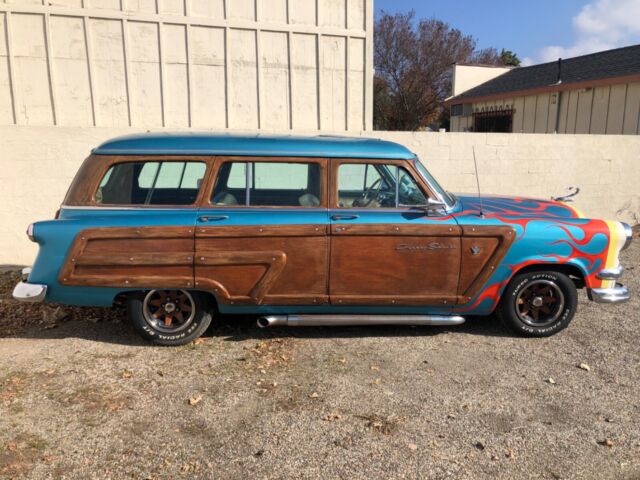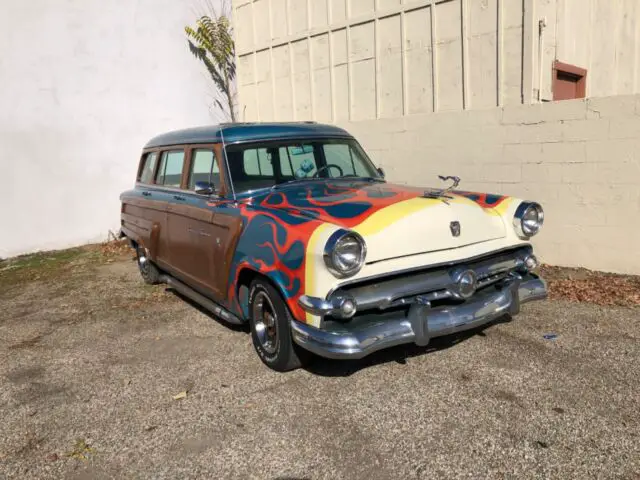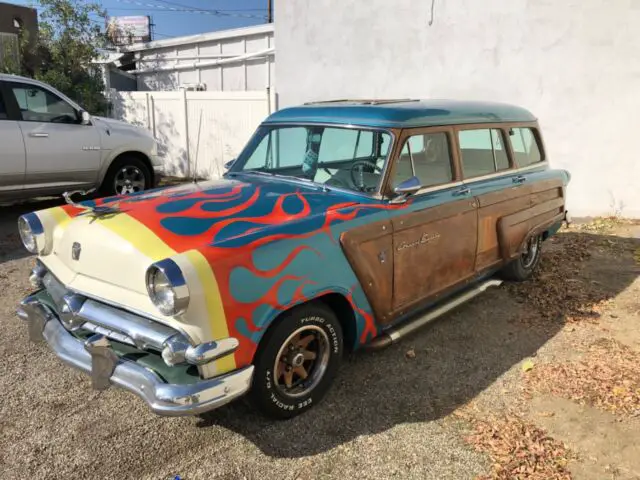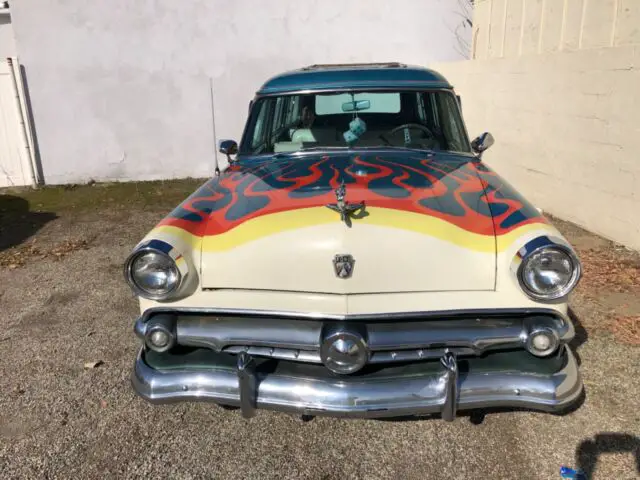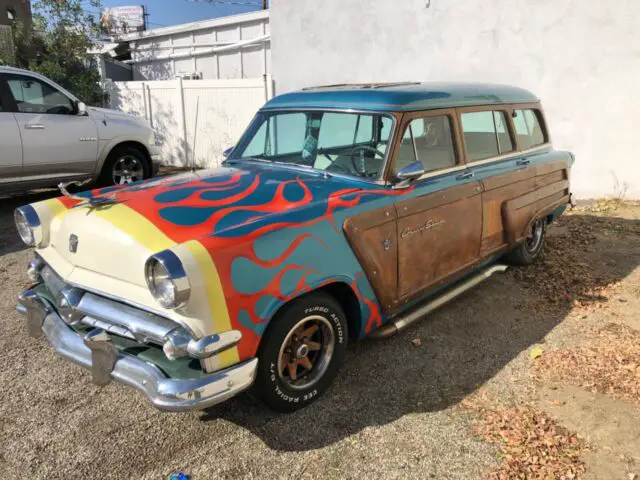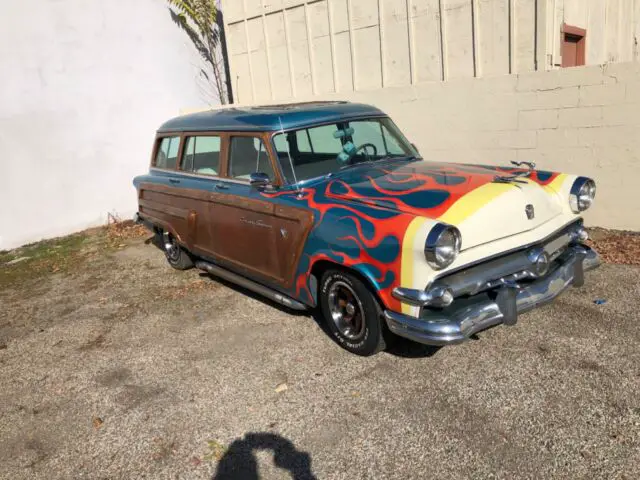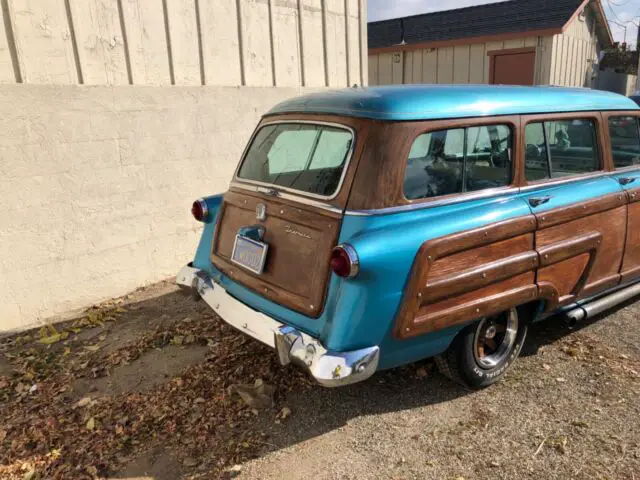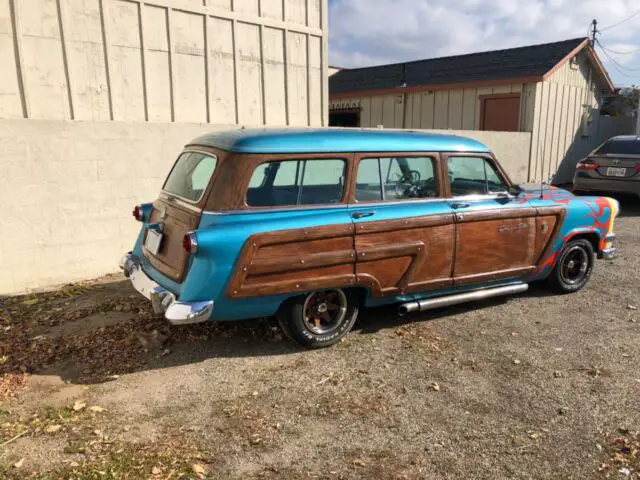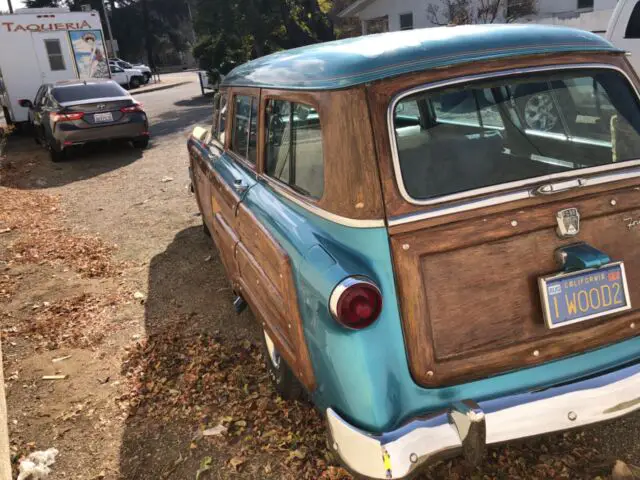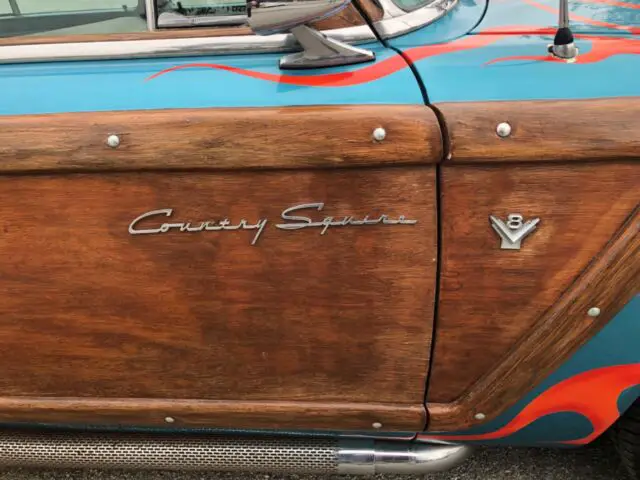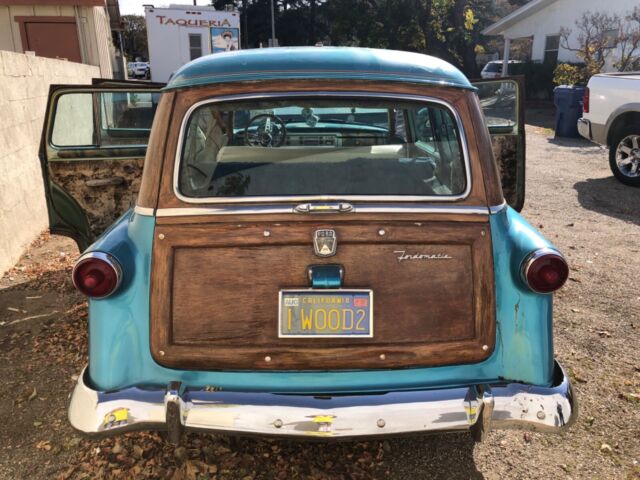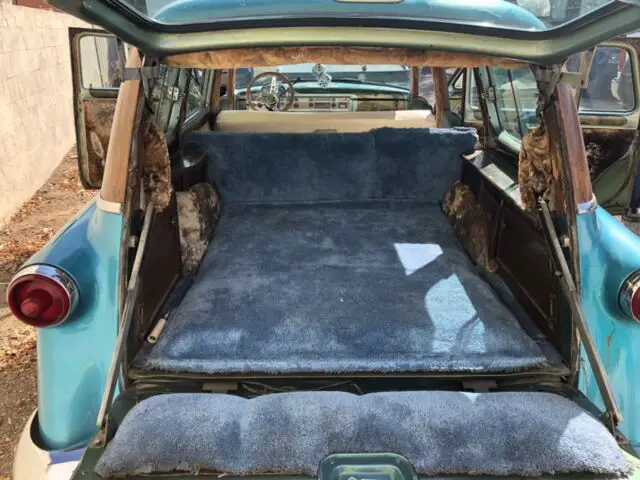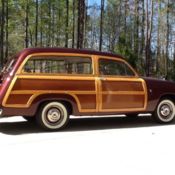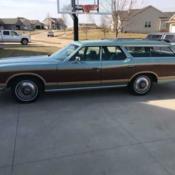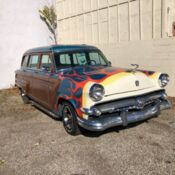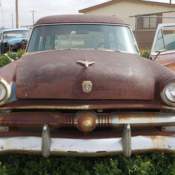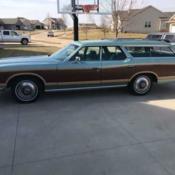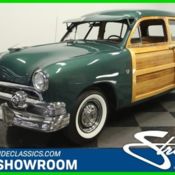1953 Ford Country Squire Woody Station Wagon
1953 Ford Country Squire Woody
Hello fellow ebayers, you are looking at a 1954 Ford Country Squire Station Wagon. Not many left and this one has a unique twist to it. Originally the car came with a y block flathead v8 with 130 hp, It had an engine transplant at sometime with a 1957 Ford 312 v8. In the 70s we had the van craze, well, someone took that theme and entered it into this Woody giving it a 70's vibe with all the side pipes, and 8 track stere, and velvet interior, sunroof, and so on. Car has a ton of character, but, it can be put back to original as well. It has been sitting for years waiting for someone to put it back on the road. I have been selling off my collection of oldie, hope you find this one of interest. Please feel free to call me anytime, or email me as well. Bobby 661-644-6526 I listed this ad and Chico 818-282-3039 owner of the car. For any specific questions or additional info needed, or maybe an offer and you would like to talk about it, no problem, just text or call Chico, 818-282-3039Here is some history and info on Ford Country Squire Station Wagons and Woodys:
Second generation (1952–1954)Following a redesign of the Ford model line for the 1952 model year, the second generation of the Country Squire was introduced, marking several major changes to the model line. While sharing much of its body (though not its wheelbase) with the newly introducedMercury Monterey, only the Country Squire featured wood paneling as standard. In a wider revision for 1952, Ford introduced station wagon counterparts for each of its sedan lines; the Country Squire was the equivalent of theCrestlinesedan. Slotted below the Country Squire were the four-doorCountry Sedan(Customline) and the two-doorRanch Wagon(Mainline).Model overview[edit]
Designed byGordon Buehrig, the second-generation Country Squire was developed under a goal to maximize parts commonality between sedan and station wagon model lines.[6]While gaining an inch in wheelbase, the second-generation Country Squire was reduced approximately 10 inches in length over its predecessor while adding two more doors for rear passengers.[6]
In contrast to theCountry Sedan, two-tone paint was not offered for the Country Squire; and the only exterior colors offered were Alpine Blue, Carnival Red metallic, Meadowbrook Green, Sungate Ivory and Glenmist Green, and they were color-keyed to the wood exterior trim.[6]Matching the wood trim, the interior was offered in a single tan/brown color scheme.[6]As with the previous generation, the second-generation Country Squire used a two-piece tailgate. The spare tire was relocated under the load floor, with the upper half of the tailgate opened by counterbalanced hinges.[6]The listed retail price was US$2,384 ($24,327 in 2021 dollars[3]) and production numbers dropped significantly with the introduction of the all steel bodied Country Sedan and the more upscale Mercury Monterey wood-bodied station wagon, having only built 5,426.[1]
Over its production, the second generation received several minor revisions. For 1953 (marking the 50th anniversary of Ford), the Country Squire featured a commemorative steering wheel center and rear-door armrests became standard.[7]For 1954, the range of color choices were expanded from six to twelve (remaining single-color exteriors), with red, blue/white, or green/white interiors replacing the previous tan/brown interior.[8]Several power-assisted features became introduced; in 1953, power steering became an option, with power brakes and a power-adjusted front seat introduced for 1954.[7][8]
Powertrain[edit]For the 1952 and 1953 model years, the Country Squire was offered with a 110hp 239 cubic-inch V8 (inline-sixes were offered only for the Ranch Wagon).[6]For 1954, in line with all Fords, the Flathead V8 was replaced by the overhead-valveY-blockV8. While built with the same displacement as the Flathead V8, the Y-block increased output from 110 to 130hp (82 to 97kW; 112 to 132PS).[8]The inline-six was redesigned, with a 223cuin (3.7L) version becoming the standard engine, producing 115hp (86kW; 117PS).[8]
Assembly changes[edit]Marketed as premium vehicles, wood-bodied station wagons were labor-intensive to assemble (and maintain[2]). To reduce assembly and ownership costs, the Country Squire abandoned wood-paneled construction for a full-steel body. To distinguish itself from the Country Sedan,DI-NOC(vinyl transfers) was used to simulate the mahogany paneling, accented by birch or maple. To further simulate the "woodie" look, woodgrain transfers were applied to the window frames and upper liftgate.[6]For 1954, the wood trim was replaced by fiberglass, colored with a woodgrain finish.[
- Condition: Used
- Make: Ford
- Model: Country Squire
- Type: Wagon
- Trim: Woody
- Year: 1953
- Mileage: 0
- VIN: U4LY-145898
- Color: Blue
- Engine size: 312
- Number of cylinders: 8
- Power options: Air Conditioning
- Fuel: Gasoline
- Transmission: Automatic
- Drive type: RWD
- Interior color: Green
- Drive side: Left-hand drive
- Options: Sunroof
- Vehicle Title: Clean Want to buy? Contact seller!
